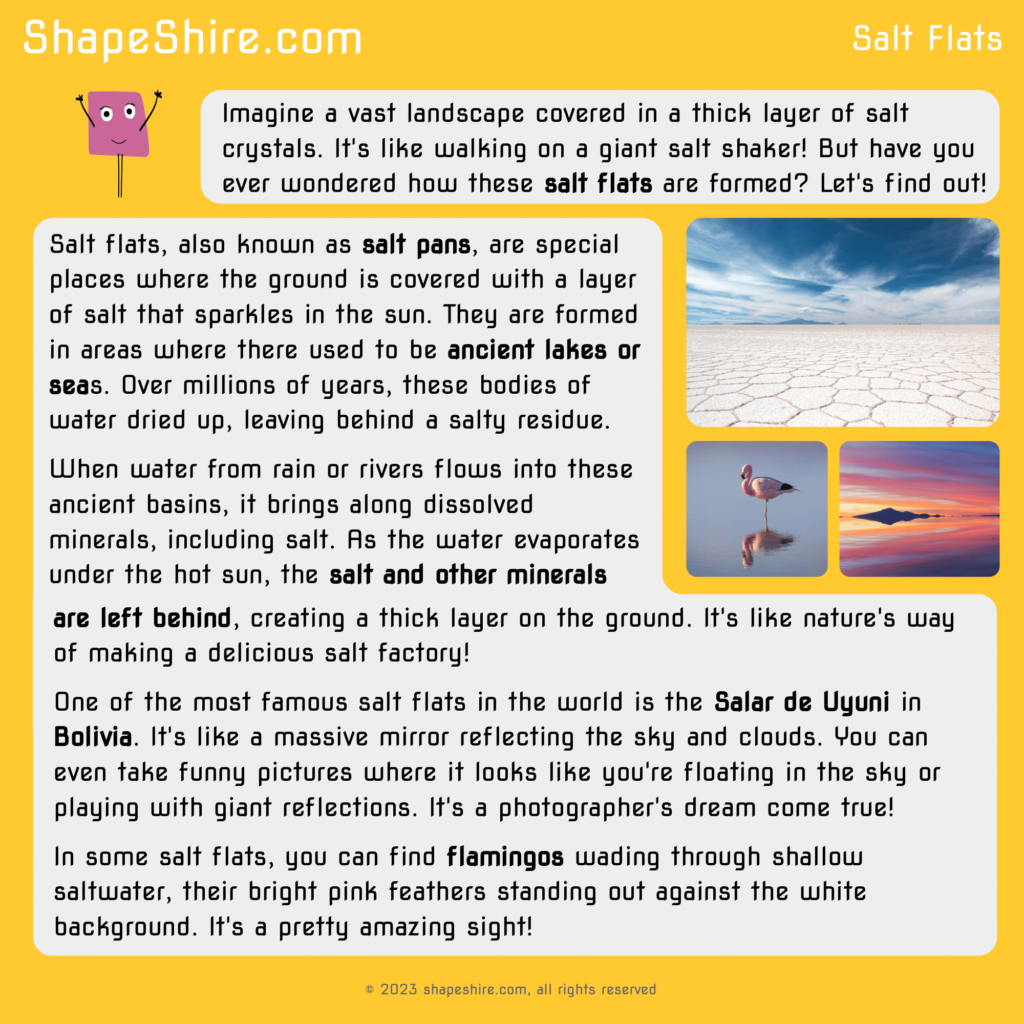Imagine a vast landscape covered in a thick layer of salt crystals. It’s like walking on a giant salt shaker! But have you ever wondered how these salt flats are formed? Let’s find out!

Salt flats, also known as salt pans, are special places where the ground is covered with a layer of salt that sparkles in the sun. They are formed in areas where there used to be ancient lakes or seas. Over millions of years, these bodies of water dried up, leaving behind a salty residue.
When water from rain or rivers flows into these ancient basins, it brings along dissolved minerals, including salt. As the water evaporates under the hot sun, the salt and other minerals are left behind, creating a thick layer on the ground. It’s like nature’s way of making a delicious salt factory!
One of the most famous salt flats in the world is the Salar de Uyuni in Bolivia. It’s like a massive mirror reflecting the sky and clouds. You can even take funny pictures where it looks like you’re floating in the sky or playing with giant reflections. It’s a photographer’s dream come true!
In some salt flats, you can find flamingos wading through shallow saltwater, their bright pink feathers standing out against the white background. It’s a pretty amazing sight!
